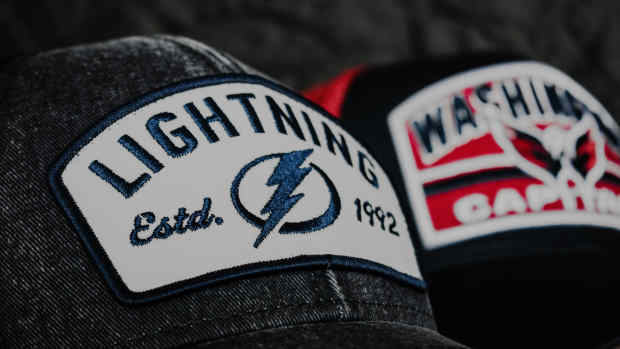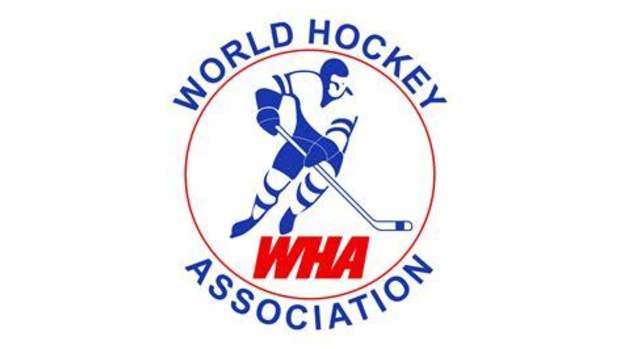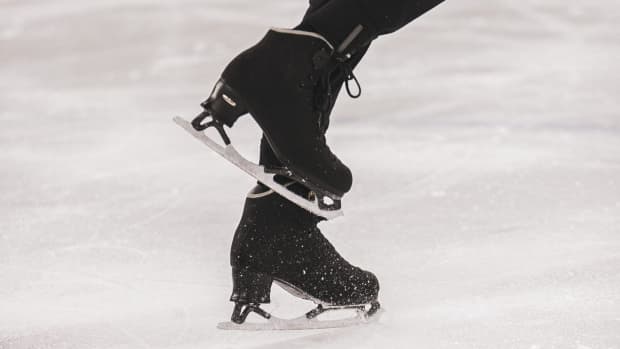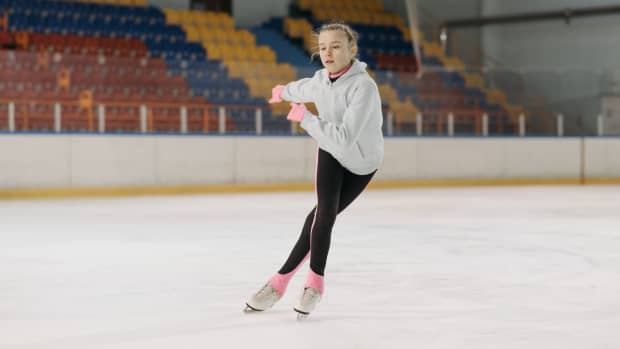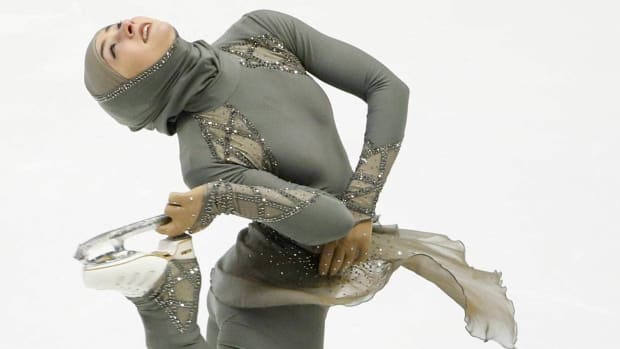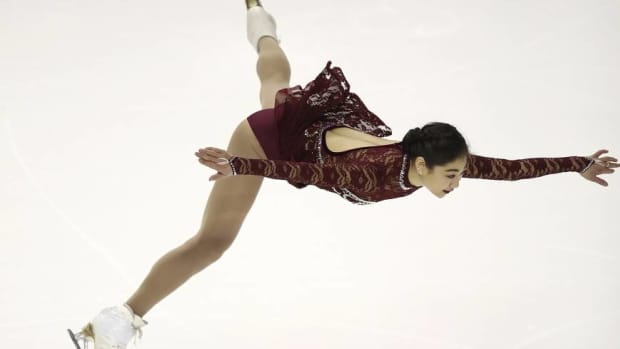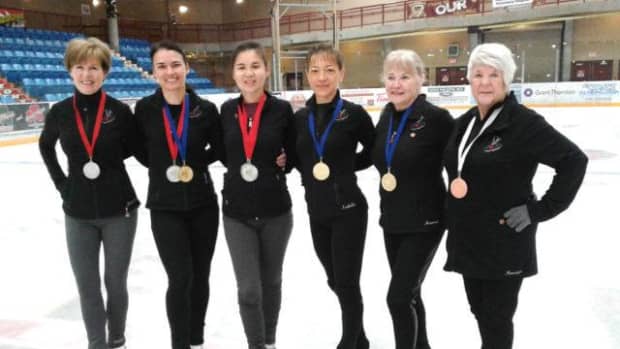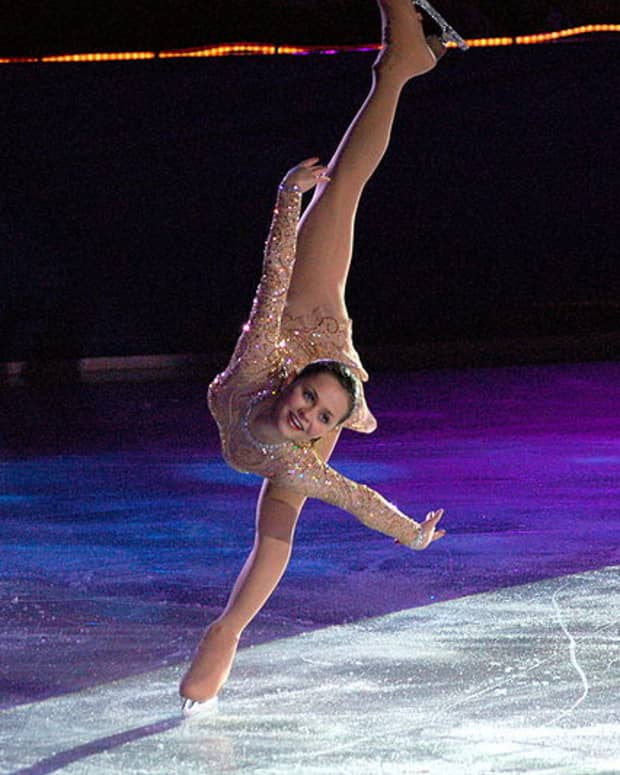Figure Skating and Moves in the Field Tests
Moves Tests
Most children who want to try out skating start at a rink in group lessons. As you start spending more time at the rink, you’ll start to hear a lot of terms that have a special meaning in the figure skating world, and a big one is moves tests.
There’s a reason for the emphasis on them: they’re fundamental, and you will want to start planning for them once your skater decides they want to pursue the sport.
The USFSA says they’re basic skating moves skated without music. But why are they important? Because they form a basic framework for just about anything else your skater might want to do in skating. Any time they want to participate in a summer skating camp, a skating clinic, or another group event, they'll be sorted into smaller groups based on their skill level—and that's determined by what moves test they've passed. If your skater wants to compete, they'll be competing against other skaters at the same moves test level.
Why Are Moves Tests Important?
Moves tests are the best way to measure progress. They're standard throughout the country, and a Novice level skater in California can be expected to be at a similar level to a Novice level skater in New Hampshire. It's similar to moving through different color belts in karate. Because of that, they're a basis for anything else your skater wants to do in this sport.
- Going to a camp? The skaters are grouped by what moves test they've passed.
- Have you ever gone to see a show with famous skaters ("Stars on Ice" or "Nancy Kerrigan's Halloween on Ice")? Then you've probably seen a short routine midway through where the stars take a break, and some school-age skaters come out to perform. Those are all local skaters, and your skater could be up there too. And, yes, they'll want every one of them to have passed some of the moves tests.
- Interested in synchronized skating? You won't be surprised to hear the teams have various requirements, including moves test level requirements.
Moves Levels
There are eight tests, and these come in order:
- Pre-preliminary (“pre-prelim” or “pre-pre”)
- Preliminary (“prelim”)
- Pre-Juvenile (“pre-juve”)
- Juvenile (“juve”)
- Intermediate
- Novice
- Junior
- Senior (“gold”)
A skater has to pass them all in order; unlike Snowplow Sam or basic skills, there’s no way to skip over a test. You’ll sometimes see a skater schedule two moves tests for the same session, but it’s not that common. There are three main reasons for this:
- It takes a lot of time and effort to prepare for a test, and skaters usually need anywhere between 3 and 12 months to get ready for each test,
- If a skater doesn't pass the first test of the day, they won't be allowed to skate the second test they've scheduled. That's frustrating!
- Money! It costs anywhere between $10 and $80 to schedule a test. If you don't pass the lower-level test, you're not getting a refund for the higher-level test just because you can't take it.
What happens if a skater doesn't pass a test? The official term is a retry. A skater who gets a retry has to wait 27 days before they can retake that test. (That's one of the reasons why rinks typically hold test sessions once a month.) But otherwise, there's no penalty; a skater can keep taking the test until they pass.
What to Expect at a Moves Test
Test sessions are scheduled by your local rink. The session will last for a few hours, depending on how many tests are being held. Moves tests are the longest tests and usually take 10 to 20 minutes.
Recommended
Your skater will have a specific time scheduled, but it's a good idea to get there early. The test session might be running ahead of schedule and you don't want to miss your slot!
A test session is divided into several groups, with all skaters in a group usually doing similar tests. For instance, you might have a group of four, with some of them testing pre-juvenile moves and some of them testing juvenile moves. Each group will start with a warm-up (typically five minutes) during which all the skaters in that group can skate around the rink and get warmed up, as well as get a feel for how hard or soft the ice is. (This is really useful if they're testing at a different rink where they don't usually skate.)
A pre-preliminary test is a good introduction to testing. At this level, the skater isn't expected to show enormous power, so there could be two skaters on the ice with each taking just one half of the sheet.
As your skater moves through the test levels, they'll get to the point where they're always the only one on the ice. Higher-level tests want the skater to demonstrate more complicated footwork as well as more power, and that needs more of the ice surface. Midway through the tests, you'll get to another milestone—three judges watching your skater. (Yes, it can be intimidating.) They have to get a passing grade from two of the judges (three feels really good, but it's a pass just the same).
During and After the Test
Your coach will be your guide through what happens. A good private coach will have taken plenty of tests themselves, and they know what it feels like to get on the ice in front of judges.
As a parent or friend, you won't go down to the side of the rink; that's reserved for skaters, coaches, judges, and all the volunteers running the test session (such as test chairs and the audio engineer who will be running the music for any tests that need it). You'll have to watch from a (warm!) cafeteria or spectator window.
When the test is over, your skater will exit the ice and the next skater in the group will begin their test. Now comes the waiting! She won't find out immediately whether she's passed; the test chair has to collect the official paperwork from the judges, and then the results will be passed on to each coach.
The coaches take time in between each group to sit with their students, review results, and go over any feedback. This is especially important if the test was marked as a retry. You want to know what to work on so you can pass the next time!
Senior Moves Test
The highest level moves test a skater can pass is senior moves. It's a huge accomplishment that takes years of dedication, practice, and effort. The USFSA also uses the title Gold Medalist, and you might see skaters at your rink wearing a special "Gold Medalist" jacket.
According to the USFSA, only about 1000 skaters pass the senior moves test every year. If a skater passes this very hard test at a test session where your child is skating, expect to see a lot of congratulatory hugs!
It may seem a lofty dream, but everyone who reaches that goal started at the very same place—testing pre-preliminary. Good luck to your skater, and leave a comment here when he or she gets their very own gold medalist jacket!





